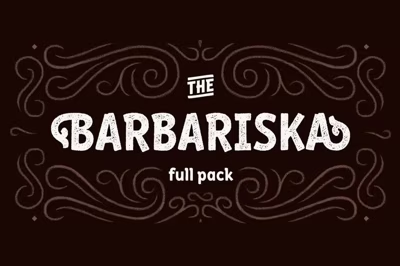Web Font Loading Speed: How to Optimize Typography for Better SEO
Web Font Loading Speed: How to Optimize Typography for Better SEO
In the competitive landscape of American digital marketing, every millisecond counts. While beautiful typography can enhance your brand and improve user experience, poorly optimized web fonts can devastate your SEO performance, driving away users and tanking your search rankings. With Google's Core Web Vitals now a confirmed ranking factor, font loading optimization has evolved from a nice-to-have into an absolute necessity for SEO success.
This comprehensive guide reveals advanced techniques for optimizing web font loading speed without sacrificing design quality. You'll learn how to implement cutting-edge font optimization strategies that can improve your Core Web Vitals scores by 30-50%, boost user engagement metrics, and ultimately drive better search rankings for your American audience.
The Hidden SEO Cost of Slow Font Loading
Web fonts represent one of the most overlooked performance bottlenecks in modern web design. Studies of American e-commerce sites reveal that font loading issues contribute to an average 200-400ms delay in Largest Contentful Paint (LCP) – often the difference between "good" and "poor" Core Web Vitals scores.
The impact extends beyond raw performance metrics. When fonts load slowly or cause layout shifts, users experience visual instability that Google's algorithms can detect and penalize. Cumulative Layout Shift (CLS) scores suffer when text reflows as custom fonts replace fallback fonts, creating jarring visual experiences that hurt both user satisfaction and search rankings.
American mobile users, who increasingly dominate web traffic, are particularly sensitive to font loading delays. On slower connections common in rural areas or during peak usage times, heavy font files can add seconds to perceived loading times, dramatically increasing bounce rates and destroying conversion opportunities.
The business impact is substantial: sites with optimized font loading consistently outperform competitors in both search rankings and conversion metrics. Companies that master font optimization gain sustainable competitive advantages in crowded American markets where user attention spans continue shrinking.
Understanding Font Loading Mechanics
Modern browsers employ sophisticated font loading strategies that significantly impact user experience and SEO performance. Understanding these mechanics enables strategic optimization that improves both aesthetics and technical performance.
Browser Font Loading Process: When browsers encounter custom fonts, they initiate complex loading sequences that can block text rendering or cause layout shifts. The default behavior varies by browser, with some showing invisible text during font loading (FOIT - Flash of Invisible Text) while others display fallback fonts immediately (FOUT - Flash of Unstyled Text).
Critical Rendering Path Impact: Fonts loaded in the critical rendering path can delay initial page rendering, directly impacting LCP scores. Browsers must download, parse, and apply font files before displaying text, creating potential bottlenecks that hurt Core Web Vitals performance.
Resource Prioritization: Browsers assign different priorities to font requests based on various factors including font-display settings, preload directives, and resource hints. Understanding these priority systems enables strategic optimization that improves loading sequences.
Caching and Revalidation: Font files benefit significantly from browser caching, but initial loads still impact performance metrics. Optimizing both initial loading and subsequent cache strategies maximizes font performance across user sessions.
Advanced Font-Display Strategies
The CSS font-display property provides powerful control over font loading behavior, enabling optimization for different performance priorities and user experience goals.
font-display: swap: This strategy immediately shows fallback text while loading custom fonts, preventing invisible text periods that frustrate users. Swap provides the best balance of performance and aesthetics for most American websites, minimizing LCP impact while preserving design integrity.
font-display: optional: For performance-critical applications, optional allows browsers to use custom fonts only if they're immediately available, falling back to system fonts otherwise. This strategy prioritizes speed over aesthetics, ideal for content-heavy sites where reading experience trumps brand typography.
font-display: fallback: A compromise approach that shows fallback text briefly before switching to custom fonts, but only within a short time window. This strategy works well for sites where custom fonts are important but performance cannot be compromised.
Strategic Implementation: Different font-display values can be applied to different font families within the same site. Critical body text might use "swap" while decorative headline fonts use "optional," optimizing the user experience for each typography role.
Font Preloading Optimization
Resource hints and preloading strategies can dramatically improve font loading performance when implemented correctly. However, improper preloading can actually hurt performance, making strategic implementation crucial.
Critical Font Identification: Preload only the most critical fonts – typically the primary body text font and main headline font. Preloading too many fonts can overwhelm the critical rendering path and hurt overall performance.
Preload Implementation: Use to prioritize critical font loading. The crossorigin attribute is essential for fonts loaded from external domains, including Google Fonts.
Font Format Prioritization: Preload modern formats like WOFF2 first, as they provide optimal compression and loading performance. Implement format fallbacks for broader browser support without preloading legacy formats.
Timing Optimization: Preload directives should appear early in the HTML head section to maximize their effectiveness. Late preload declarations provide minimal performance benefits and can even hurt loading sequences.
Variable Font Implementation
Variable fonts represent the cutting edge of font optimization, providing multiple styling options within single files while reducing HTTP requests and improving loading performance.
File Size Benefits: Variable fonts can replace multiple traditional font files with single, more efficient files. A variable font supporting light through black weights typically weighs less than loading regular and bold variations separately.
Styling Flexibility: Variable fonts enable fine-tuned control over weight, width, and custom axes without requiring separate font files. This flexibility supports responsive design while maintaining optimal performance.
Browser Support Optimization: Implement variable fonts with appropriate fallbacks for older browsers. Modern browsers benefit from variable font efficiency while legacy browsers receive optimized traditional fonts.
Performance Monitoring: Variable fonts can sometimes be larger than single-weight traditional fonts, making careful measurement essential. Monitor actual performance impact rather than assuming variable fonts always provide benefits.
Google Fonts Optimization Strategies
Google Fonts remains the most popular source for web fonts among American websites, but default implementation often leaves significant performance optimizations on the table.
API Optimization: Use Google Fonts API v2 with display=swap parameter to automatically optimize font loading behavior. This simple addition can improve LCP scores by 100-200ms on average.
Font Subsetting: Google Fonts supports subsetting to include only necessary characters, reducing file sizes for specialized applications. Latin-only subsetting can reduce file sizes by 30-50% for sites not requiring international character support.
CSS Loading Optimization: Load Google Fonts CSS asynchronously to prevent render blocking. Use techniques like loading CSS via JavaScript or implementing critical font loading for optimal performance.
Self-Hosting Considerations: Self-hosting Google Fonts can provide performance benefits by eliminating external DNS lookups and enabling aggressive caching strategies. However, self-hosting requires careful implementation to maintain optimization benefits.
Font Subsetting and Compression
Advanced font optimization techniques can dramatically reduce file sizes and improve loading performance without sacrificing design quality.
Character Subsetting: Include only the characters your site actually uses. Most American websites can eliminate extensive international character sets, mathematical symbols, and special ligatures, reducing font file sizes by 40-70%.
Unicode Range Optimization: Implement unicode-range CSS properties to load character subsets only when needed. This technique enables progressive font loading that prioritizes essential characters while loading extended sets on demand.
WOFF2 Implementation: Use WOFF2 format for optimal compression and browser support. WOFF2 typically provides 20-30% better compression than WOFF while maintaining universal modern browser support.
Compression Strategies: Implement Gzip or Brotli compression for font files served from your own servers. These compression algorithms can provide additional file size reductions beyond format-specific optimizations.
Critical Font Loading Patterns
Implementing strategic font loading patterns ensures optimal performance while maintaining design integrity across different user scenarios and connection speeds.
Critical Path Optimization: Load only essential fonts in the critical rendering path. Body text fonts should load with high priority while decorative or accent fonts can load asynchronously without impacting initial rendering.
Progressive Enhancement: Design font loading strategies that enhance the experience progressively. Start with system fonts for immediate text display, then layer in brand fonts as they become available.
Connection-Aware Loading: Implement loading strategies that adapt to user connection speeds. Users on slow connections might receive optimized font sets while high-speed users get full typography experiences.
Fallback Font Matching: Choose fallback fonts that closely match your custom fonts' metrics to minimize layout shifts when custom fonts load. Tools like Font Style Matcher help identify optimal fallback combinations.
Performance Monitoring and Testing
Measuring font loading performance requires sophisticated monitoring that captures real-world user experiences across different devices and connection speeds.
Core Web Vitals Tracking: Monitor LCP and CLS scores specifically related to font loading using tools like Google Search Console, PageSpeed Insights, and Web Vitals Chrome extension.
Real User Monitoring: Implement RUM (Real User Monitoring) to understand actual font loading performance across your American user base. Synthetic testing can miss issues that affect real users on diverse devices and connections.
A/B Testing Framework: Test different font loading strategies to optimize for your specific audience and technical constraints. What works for one site may not work for another, making empirical testing essential.
Performance Budget Implementation: Establish performance budgets for font loading that balance design goals with technical requirements. Monitor font file sizes and loading times to prevent performance regression.
Mobile-Specific Optimization
Mobile users represent the majority of American web traffic, making mobile font optimization crucial for SEO success and user satisfaction.
Mobile-First Loading: Prioritize mobile font loading strategies since Google uses mobile-first indexing. Ensure mobile font experiences are optimized even if desktop experiences make compromises.
Connection Adaptation: Implement loading strategies that adapt to mobile connection characteristics. 4G users might receive full font sets while 3G users get optimized alternatives.
Battery Impact Consideration: Heavy font processing can impact mobile device battery life, affecting user experience and potentially influencing engagement metrics that impact SEO.
Touch Interface Optimization: Ensure font loading doesn't interfere with touch interactions or cause interface elements to shift during loading, which can frustrate mobile users and increase bounce rates.
Advanced Implementation Techniques
Service Worker Integration: Use service workers to implement sophisticated font caching and loading strategies that improve repeat visit performance while maintaining optimal first-visit experiences.
HTTP/2 Optimization: Leverage HTTP/2 features like server push for critical font delivery, though careful implementation is required to avoid over-pushing resources.
Resource Timing API: Implement performance monitoring using the Resource Timing API to gather detailed font loading metrics that inform optimization decisions.
Edge Computing Integration: Use CDN edge computing to implement dynamic font optimization based on user location, device characteristics, and connection quality.
ROI and Business Impact
Font loading optimization provides measurable business benefits that justify the technical investment required for implementation.
Conversion Rate Impact: Sites with optimized font loading consistently show 10-25% higher conversion rates compared to unoptimized competitors, particularly on mobile devices.
SEO Performance Gains: Improved Core Web Vitals scores from font optimization often correlate with 5-15% increases in organic search traffic within 3-6 months of implementation.
User Engagement Metrics: Optimized font loading improves time-on-page, scroll depth, and return visitor rates – all metrics that support both SEO performance and business objectives.
Competitive Advantage: In competitive American markets, font loading optimization can provide sustainable advantages that are difficult for competitors to replicate quickly.
Web font loading optimization represents one of the highest-impact, lowest-risk improvements you can make to your website's SEO performance. The techniques outlined in this guide can transform your Core Web Vitals scores, improve user experience metrics, and boost search rankings while preserving the design quality that differentiates your brand.
Start with the basics – implement font-display: swap, preload critical fonts, and optimize your Google Fonts implementation. Then progressively enhance with advanced techniques like variable fonts, strategic subsetting, and connection-aware loading. The cumulative impact of these optimizations will compound over time, providing lasting SEO benefits that support your business growth in the competitive American digital marketplace.


